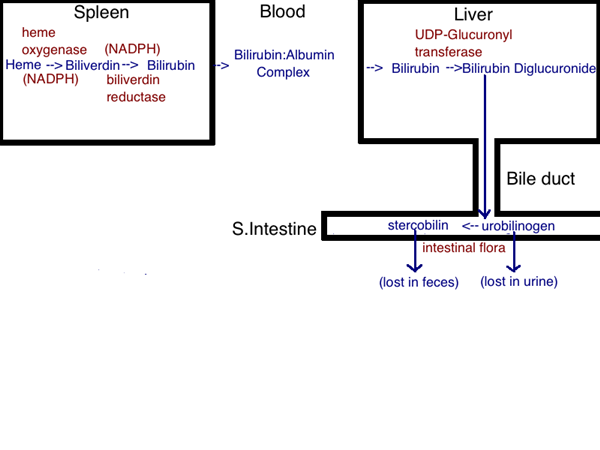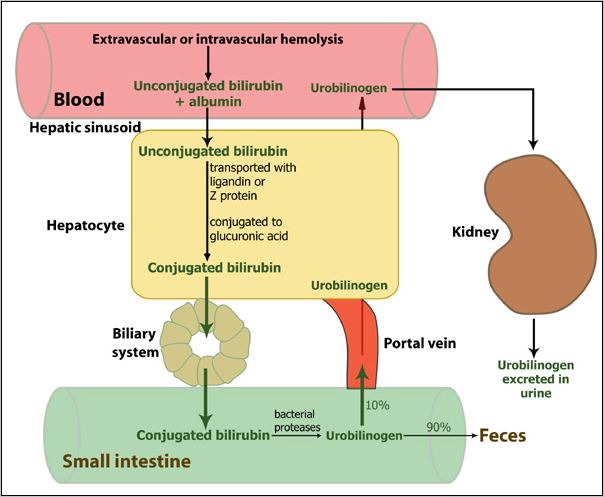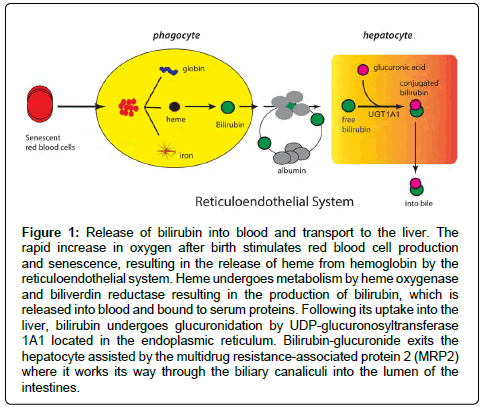Overview

Heme-oxygenase (HO) is the first step of Heme degradation

Different Isoforms of Heme-oxygenase are active in different cells (HMOX-1, HMOX-2)

HO-1 is inducible by the same factors that induce COX-2 and iNOS
Heme Oxygenase-1 Gene Promoter Polymorphism is Associated with Risk of Gastric Adenocarcinoma and Lymphovascular Tumor Invasion.
Central CO-heme oxygenase pathway raises body temperature by a prostaglandin-independent way.
CO effects
Effects of nitrogen monoxide and carbon monoxide on molecular and cellular iron metabolism 2003
Involvement of the Heme Oxygenase–Carbon Monoxide Pathway in Keratinocyte Proliferation
Biliverdin and more




Albumin: a multi-purpose carrier

Genetic Hyperbilirubinemia
Gibert syndrome
Choleresis
Choleretic Effect of licorice

Hyperbilirubinemia Protects against Aging-Associated Inflammation and Metabolic Deterioration, 2016
Compared to their normobilirubinemic siblings, aged hyperbilirubinemic Gunn rats showed significantly smaller amounts of visceral fat, better glucose tolerance, and decreased serum levels of proinflammatory cytokines TNFα, IL-1β, and IL-18. Simultaneously, livers from Gunn rats showed decreased expression of senescence markers and cell cycle inhibitors p21 and p16.
Hypobilirubinemia
Is associated with Anemia, Diabetes, Osteoporosis, and (Aromatase deficiency?)
Referee_supplementary_info_Diabetes_and_Osteoporosis, 2021
h4 Hyperbilirubinemia
Serum Bilirubin Levels in Overweight and Obese Individuals: The Importance of Anti-Inflammatory and Antioxidant Responses, 2021
In addition to bilirubin’s known role as an antioxidant and anti-inflammatory molecule, it is now recognized that unconjugated bilirubin is also a potent endogenous activator of several ligand-activated transcriptional factors crucially involved in metabolic homeostasis, including peroxisome proliferator-activated receptor alpha (PPAR-α), aryl hydrocarbon receptor, constitutive androsterone receptor (CAR), liver X receptors (LXRs), and pregnane X receptor (PXR) --> induces CYP24 that inactivates 1,25 (OH)2Vit D.
Potential cardiovascular risk protection of bilirubin in end-stage renal disease patients under hemodialysis. 2014
Additionally, a significant positive correlation between bilirubin and serum iron and transferrin saturation and a significant negative correlation between bilirubin and transferrin were found.